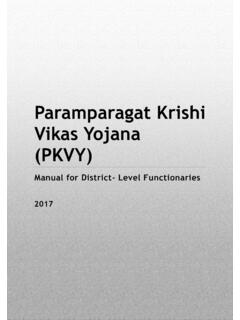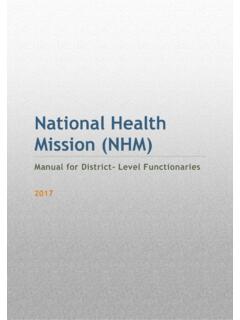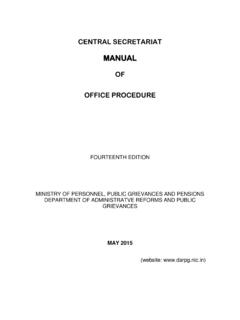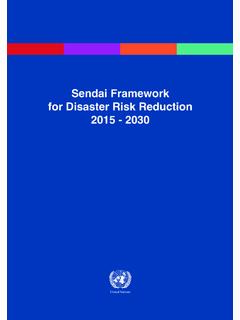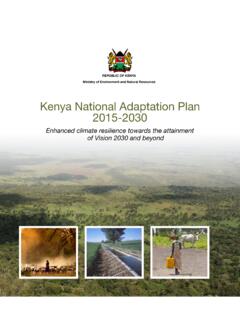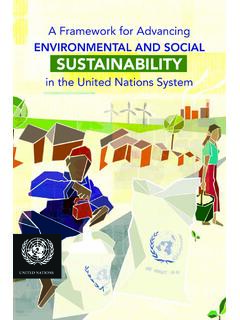Transcription of SOCIAL ACCOUNTABILITY MECHANISM
1 A generic frameworkSOCIAL ACCOUNTABILITY MECHANISMA guide for consideration in policy designNational Institute of Administrative ResearchLal Bahadur Shastri National Academy of AdministrationMussoorie - 248 179 EPABX Lines: + , 2630917 Fax: + : sponsored by :Department of Administrative Reforms and Public GrievancesMinistry of Personnel, Public Grievances and PensionsGovernment of IndiaStudy conducted by :National Institute of Administrative ResearchLal Bahadur Shastri National Academy of Administration, Mussoorie - 248 179a generic frameworkSOCIAL ACCOUNTABILITY MECHANISMA guide for consideration in policy designStudy sponsored by :Department of Administrative Reforms and Public GrievancesMinistry of Personnel, Public Grievances and PensionsGovernment of IndiaStudy conducted by.
2 National Institute of Administrative ResearchLal Bahadur Shastri National Academy of Administration, Mussoorie - 248 179a generic frameworkSOCIAL ACCOUNTABILITY MECHANISMA guide for consideration in policy designStudy sponsored by :Department of Administrative Reforms and Public GrievancesMinistry of Personnel, Public Grievances and PensionsGovernment of IndiaStudy conducted by :National Institute of Administrative ResearchLal Bahadur Shastri National Academy of Administration, Mussoorie - 248 179i Contents Preface ii iii Acknowledgement iv Project Team v Sl.
3 No. Chapter Page No. 1. Introduction 1 6 2. Assessing ACCOUNTABILITY failures in Education and Health 7 19 3. Towards a framework for SOCIAL ACCOUNTABILITY 1: Getting the compact right 20 29 4. Towards a framework for SOCIAL ACCOUNTABILITY 2: strengthening citizen voice 30 37 5. SOCIAL ACCOUNTABILITY Initiatives: Challenges and Vulnerabilities 38 39 6. Institutionalizing SOCIAL ACCOUNTABILITY : some policy considerations to overcome the challenges and vulnerabilities 40 43 7. 8. Enabling SOCIAL ACCOUNTABILITY : some consideration for policy design Institutionalizing SOCIAL ACCOUNTABILITY .
4 Recommendations for policy design 44 51 52 55 APPENDICES Appendix 1 56 62 Appendix 2 63 ii Preface The study on SOCIAL ACCOUNTABILITY is an initiative of the Department of Administrative Reforms & Public Grievances, Government of India, which intends to explore the ways and means of enhancing the ability of citizens (especially the poor and the marginalized) to engage with public servants and politicians in a more informed, direct and constructive manner so as to improve public service delivery. National Institute of Administrative research (NIAR), Lal Bahadur Shastri National Academy of Administration (LBSNAA) Mussoorie has been entrusted with the task of developing generic framework on SOCIAL ACCOUNTABILITY mechanisms which can be broadly applied in various SOCIAL sector programmes and schemes.
5 SOCIAL ACCOUNTABILITY implies the engagement of civic organizations to express demand for public services, and exact ACCOUNTABILITY from local service providers to improve service quality. SOCIAL ACCOUNTABILITY is being increasingly recognized by state and non state institutions as a means of enhancing democratic governance and improving service delivery. It refers to a broad range of actions and mechanisms that citizens, communities, independent media and civil society organizations use to hold public officials and public servants accountable.
6 In recent years, the expanded use of participatory data collection and analysis tools, combined with enhanced space and opportunity for citizen and civil society engagement with the state, have led to a new generation of SOCIAL ACCOUNTABILITY practices. These methods and tools are being increasingly used across different parts of India, South Asia, and the world. Some of the practices that have been applied are: Participatory Planning and Policy Formulation (Kerala, Brazil, Bangladesh); Participatory Budget Analysis (Gujarat); Participatory Expenditure Tracking System (Uganda, Delhi, Rajasthan); Citizens Surveys/Citizen Report Cards (Bangalore, Maharashtra, Ukraine, Philippines, Pakistan); Citizen Charters (Andhra Pradesh, Karnataka).
7 And Community Scorecards (Malawi, Maharashtra, Andhra Pradesh) In addition to these methods and tools, many more exist such as campaigns for electoral reforms, public interest litigation, SOCIAL audits, independent evaluation and so forth. It has been well established that SOCIAL ACCOUNTABILITY mechanisms can contribute to improved governance, accelerate development, create effectiveness through better service delivery and empowerment. The overall objective of these mechanisms is to promote transparency and ACCOUNTABILITY in the service delivery processes.
8 Iii The key areas for the use of SOCIAL ACCOUNTABILITY methods are in: o the preparation, implementation, monitoring and evaluation of poverty reduction strategies; o public sector reform and public expenditure management processes; o community driven development programs; and o sectoral interventions ( , in health, education, transport, water and sanitation, rural development and urban development programmes (and) The NIAR in this study has tried to study the various challenges and vulnerabilities that come in way of institutionalizing SOCIAL ACCOUNTABILITY and how possibly these can be tackled.)
9 Also an attempt has been made to identify the manner in which the existing institutional designs can be made more accountable and accurate. In addition to this, it is equally important to strengthen the citizen voice to empower the community to hold the system accountable and in turn take benefit of the various schemes and programmes. Keeping this changing scenario in view, the NIAR has attempted to study the ACCOUNTABILITY failures in India and in turn study the potential ways of enhancing SOCIAL ACCOUNTABILITY in two flagship programmes, namely, Sarva Shiksha Abhiyan (SSA) and National Rural Health Mission (NRHM).
10 The framework was discussed during the workshop held at New Delhi on under the chairmanship of Additional Secretary & Officials of DAR&PG and experts from various organizations. The suggestions have been incorporated in the framework . We hope that the generic framework designed will be a guiding instrument for policy makers and programme implementing officials to make the system more accountable, transparent and efficient and, in turn make the programmes launched by the government more accessible to the poor, marginalized and disadvantaged segments of the society apart from the general public and, will help in poverty reduction and development of the country.



